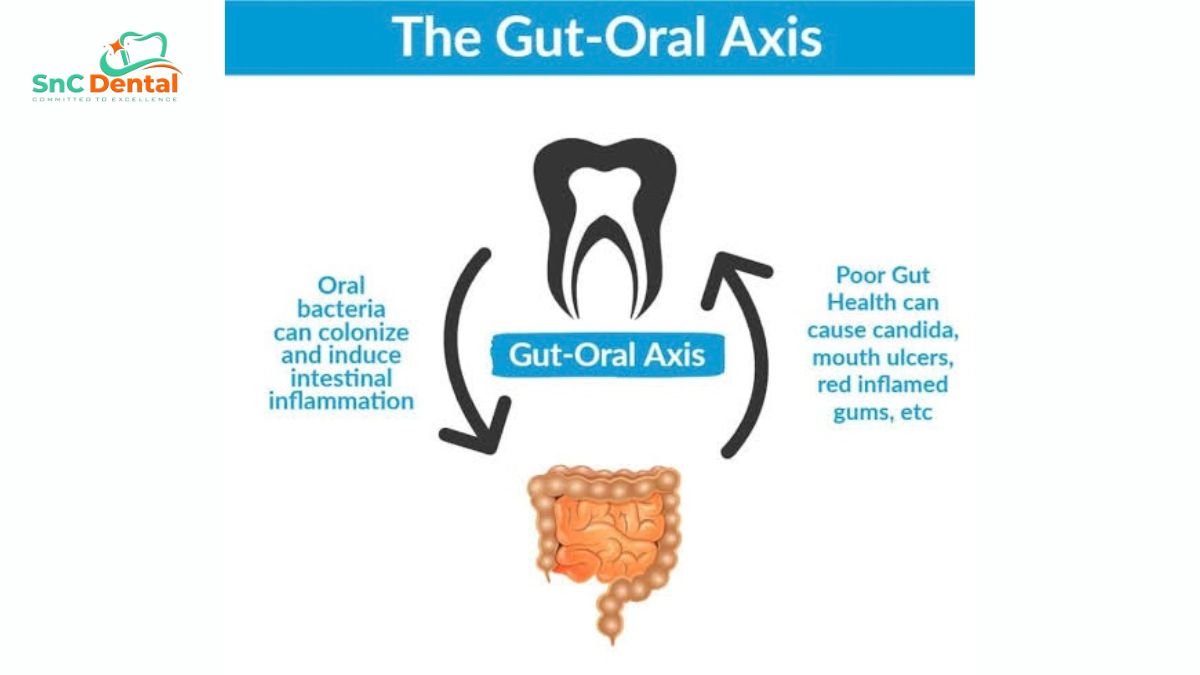The Surprising Link Between Your Mouth and Your Gut
Have you ever noticed that some people—friends, relatives, or acquaintances—lose their teeth at a young age? Many of them report that their teeth become loose for no apparent reason, leading to extractions by their dentist or natural loss over time. In contrast, some individuals manage to keep their natural teeth well into their seventies and eighties.

Why do we see such variation in oral health among people, even when they follow similar oral hygiene routines?
Interestingly, the gut and mouth are part of the same digestive tract, which starts at the mouth and ends at the colon. Both areas house complex microbiomes—communities of bacteria, fungi, and other microorganisms that are crucial for maintaining overall health. When these microbiomes become imbalanced, it can lead to issues not just locally in the mouth, but throughout the body.
The Connection to Systemic Diseases:
There is ample evidence in scientific literature linking poor oral health and gum inflammation to several chronic systemic diseases, such as:
-Diabetes
-Cardiovascular disease
-Pulmonary disease
-Colorectal or pancreatic cancers
Which are the most common bacteria that travel?
A study conducted by Segata et al. found that nearly half (45%) of the subjects in the Human Microbiome Project had overlapping bacteria in their oral cavity and stool. This suggests that the transfer of oral bacteria to the gut is quite common. Bacteria from the mouth reach the intestines through swallowed saliva, food, and drinks, with saliva containing a substantial amount of oral bacteria.
Among the thousands of bacteria that can translocate from the mouth to the gut, Porphyromonas gingivalis is the most frequently found species associated with periodontal disease. This bacterium can withstand the harsh pH of the stomach and then inhabit and proliferate in the gastrointestinal tract. P. gingivalis is particularly notable for its acid resistance, enabling it to migrate to the colon and influence colonic functions, despite the fact that the digestive tract has a significantly higher bacterial density than the oral cavity. Long-term ingestion of P. gingivalis, seen in cases of periodontitis, may contribute to intestinal dysbiosis. Another important microbe that can move from the oral cavity to other parts of the body is Aggregatibacter actinomycetemcomitans, which is also associated with periodontal disease.
Consequences in the Gut:
Disturbances in the gut microbiome caused by swallowed bacteria can lead to the release of Endotoxins, resulting in metabolic disorders. It is believed that this release of endotoxins may not necessarily stem from bacteria in the oral cavity but could be linked to changes in the gut microbiome population initiated by oral bacteria that have been swallowed. Additionally, severe illnesses and the genetic susceptibility of the host may promote the ectopic colonization of oral bacteria.
Treatment:
1. Maintain Good Oral Hygiene:
Brush your teeth twice a day to minimize the buildup of bacteria in the mouth.
2. Use an Antibacterial Mouthwash:
Rinsing your mouth regularly is especially beneficial if you have gum recession, gaps between your teeth, or suffer from a metabolic disorder like diabetes.
3. Eat a Balanced Diet:
Consume fiber-rich fruits, vegetables, and fermented foods to support both your oral and gut microbiomes. Limit sugar and processed foods, as they can promote the growth of harmful bacteria.
4. Limit Sugar and Processed Foods:
Avoid consuming foods that can promote the growth of harmful bacteria.
5. Schedule Regular Dental Visits:
Consulting a dentist for routine screenings and treatments for periodontal disease is essential for maintaining oral health.
6. Stay Hydrated:
Drinking water aids in maintaining saliva production, which protects your teeth and gums while also supporting digestion in the gut.
7. Avoid Smoking and Excessive Alcohol:
Both can disrupt the balance of microbiomes in the gut and mouth.
By following these tips and understanding the connection between oral and gut health, you can take the first step towards maintaining a healthy balance between your mouth and gut microbiomes.

